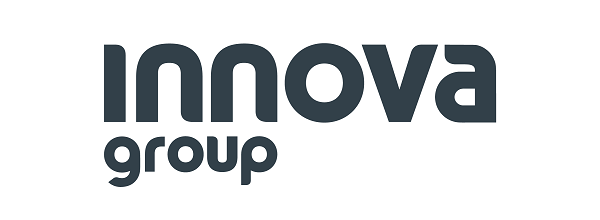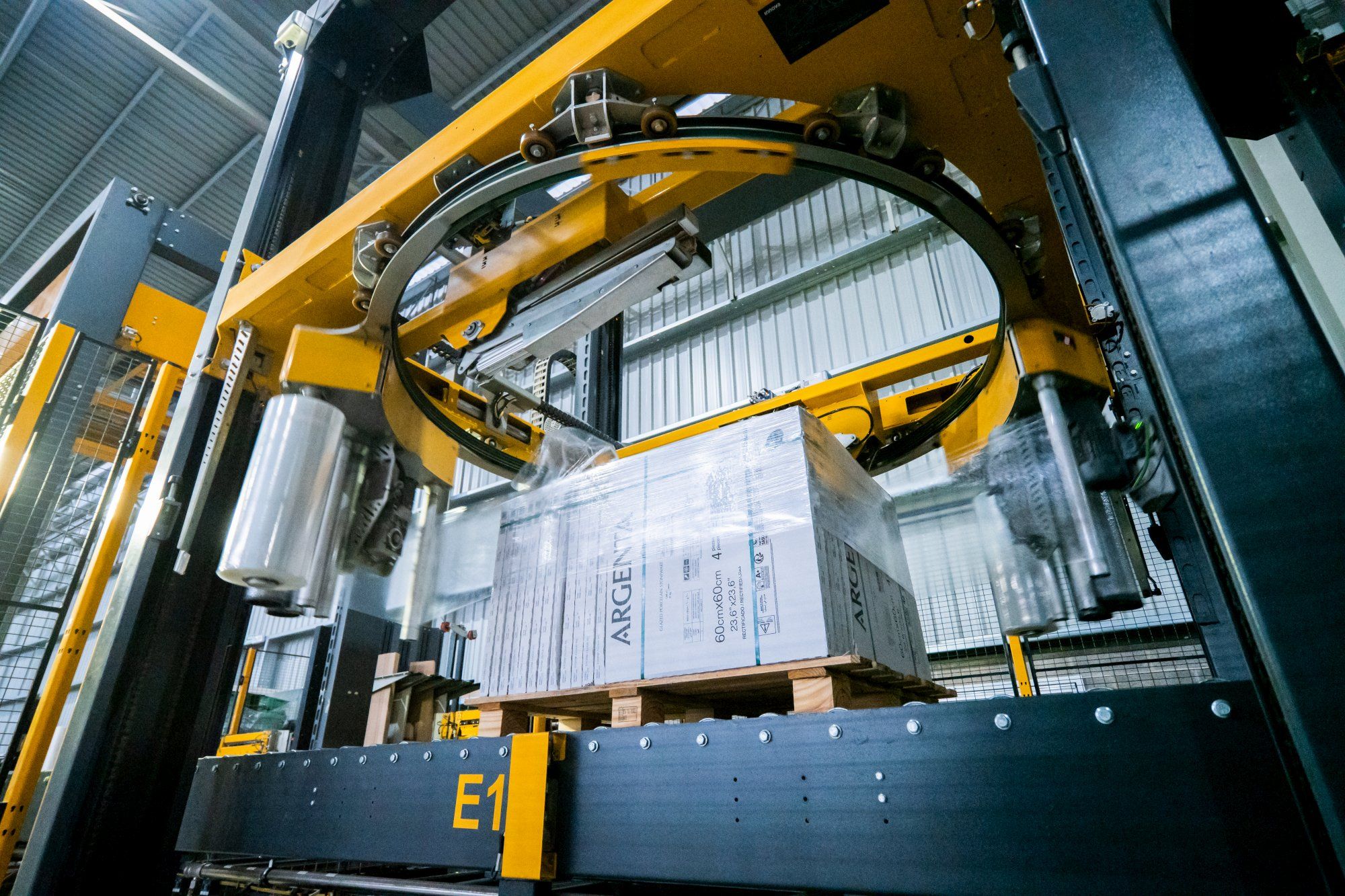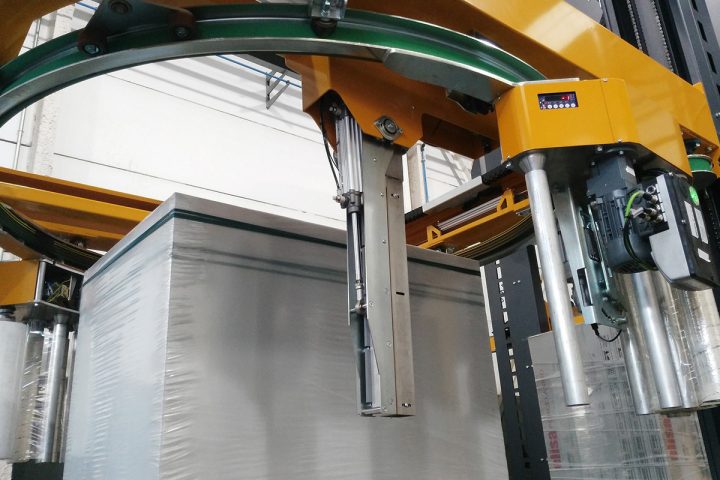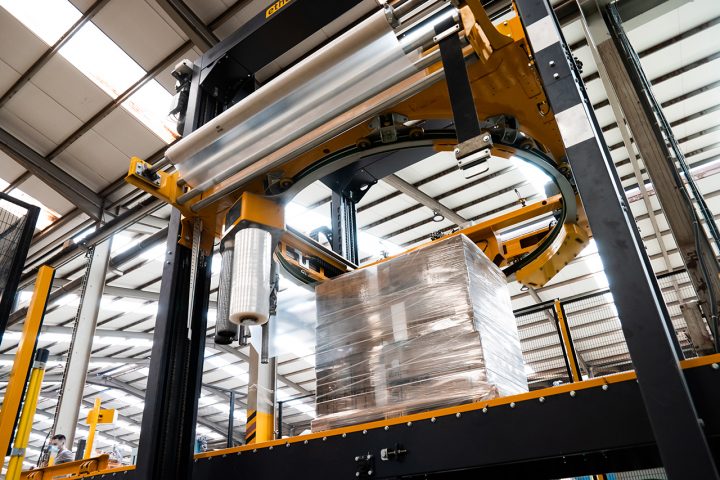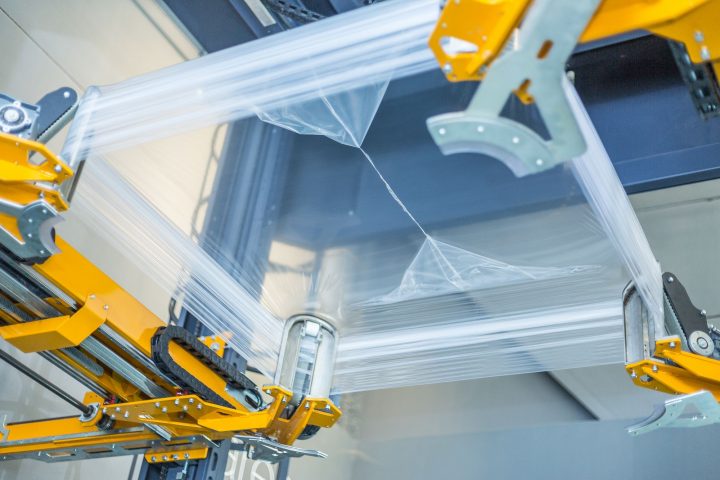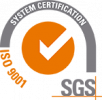5 keys to saving on pallet stretch wrapper film
In the context of rising prices and tax regulations on single-use plastics, reducing and saving on film is more essential than ever. All companies that use packaging systems are committing to reduce and save on film to answer their sustainable and logistic goals. In today’s article, we present the keys to saving specifically in the use of stretch film, used in pallet wrappers.
1. Stretch film type
The main key to savings is the film used for pallet stretch wrapping. Although inexpensive pre-stretched films are available, they usually do not offer the same performance in terms of securing and industrial wrapping finish, and more film must be used to contain and protect the load.
Therefore, we recommend using technical stretch films with reduced film gauge. Even though these films may have a higher cost, they allow for greater savings, since the pallet stretch wrapper uses less plastic. In addition, it is beneficial to reduce the amount of film used to contribute to sustainability.
These types of film usually have two main characteristics: pre-stretchable and lower micronage.
How does pre-stretch film work?
Pre-stretching is the process of elongating and stretching the film to increase its performance. To pre-stretch the film this way the automatic stretch wrapper must include a pre-stretching system, either motorized or electric, whereby the rollers included in the film supply system perform the maximum stretch of the film according to the properties of the film and the stretch wrapper system.
Typically, stretch wrappers with this feature allow pre-stretching between 100% and 300%, depending on their performance and wrapping configuration. Most users of pallet stretch wrappers use between 200 and 250% pre-stretch, as it is a stable and safe interval for optimal wrapping, offering a good balance between savings and efficiency.
What does 300% pre-stretching mean?
For example, taking as a reference a 1000 mm (40”) film segment to cover one side of a standard pallet, with a pre-stretch of 300% we would obtain a film of 3000 mm (120”), to cover three sides of the same pallet.
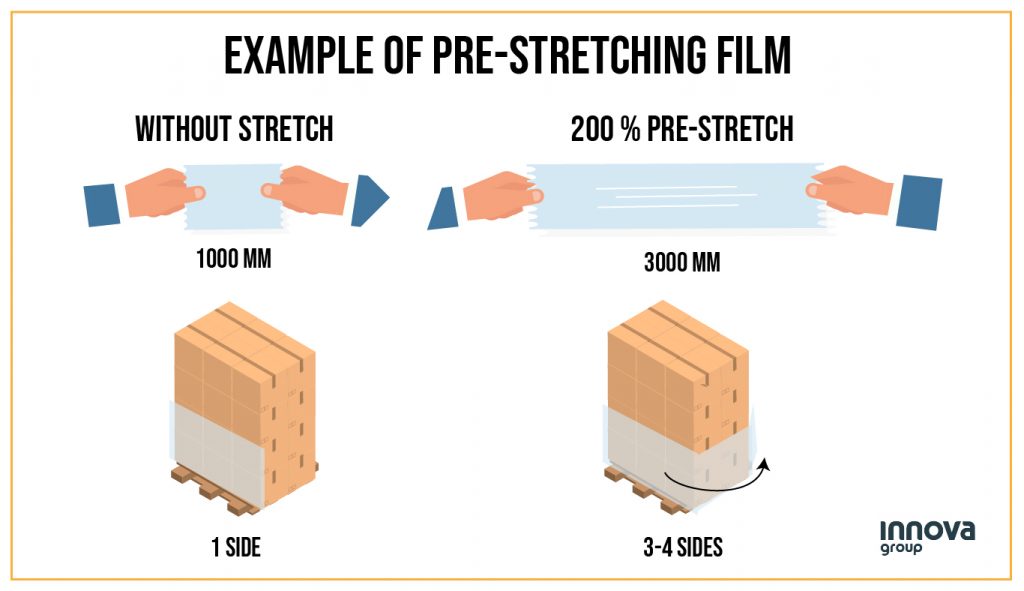
In the medium to long term, it is interesting to calculate the cost difference between using a film without pre-stretching properties (already pre-stretched), which is cheaper but needs a bigger amount, and a film with pre-stretching that can cover x3 times the same size. The cost difference may even pay off the purchase of a higher-performance stretch wrapper with a pre-stretching system.
2. Use of lower-thickness films
Another option to reduce costs and weight in packaging is to use lower-micron film. The trend is to reduce the film thickness from the standard 20-30 microns to even 10 microns. These are advanced films, with high levels of linear low-density polyethylene (LLDPE), which provide elasticity, stretchability, and puncture resistance even at lower thicknesses.
In short, less plastic, lower costs, and a greater contribution to sustainability.
3. Type of wrapping machine and performance
In addition to the type of film, it is necessary to have a stretch wrapping machine (either automatic or semi-automatic) with a pre-stretching system and advanced features to economize on film.
What features of the wrapper contribute to film savings?
- Pre-stretching system: It is not only essential to have a film with maximum pre-stretch, but also a mechanized system that allows pre-stretch of up to 400%. This system can be mechanized or electronic, the latter providing greater advantages in optimizing the use of the film as it is programmable.
- Torque control system: This technology is used to control the force or tension applied to the motor rotor, i.e. it allows torque control instead of speed control. In stretch wrappers, it provides much more control over the tension applied to the wrapping, thus optimizing the film to the maximum.
- High speed: When using automatic wrapping machines, as is the Innova high-performance ring wrapping machine, the ultra-fast wrapping also allows to economize on the film applied, since only the necessary film is used, without excesses.
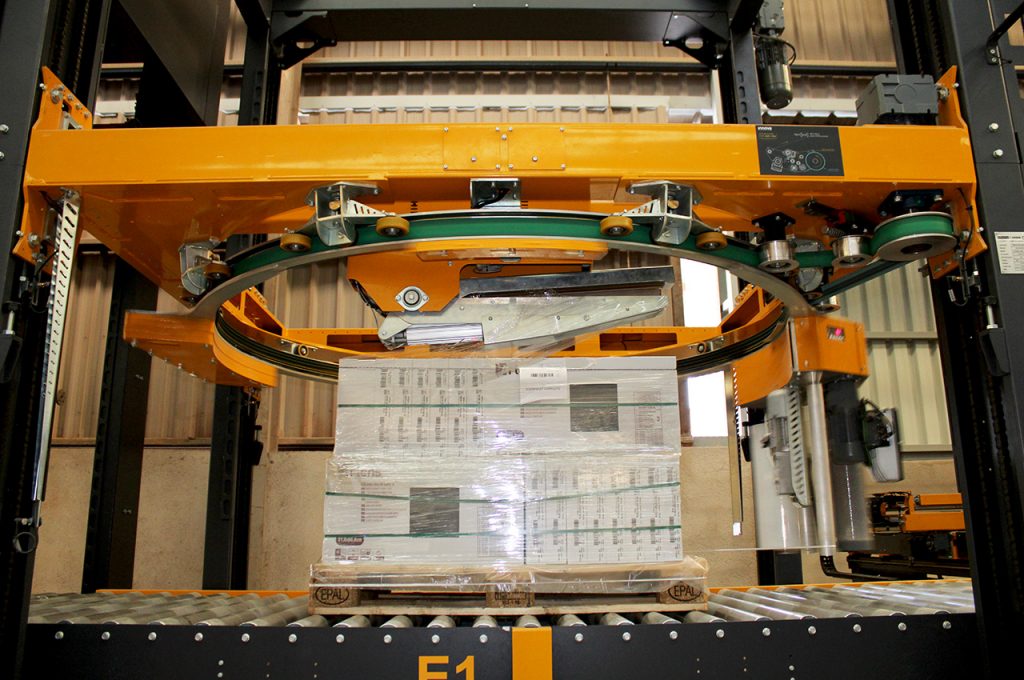
4. Optimal wrapping cycle
Another key to saving on stretch film is the stretch wrapping cycle itself. It is not enough to have a high-performance film and a automatic pallet stretch wrapper to match if you do not program a cycle to stretch wrap with the necessary amount of film. In this case, it is essential to program a cycle that takes into account:
- Reinforcement for support and stability (mainly at the base of the pallet)
- Containment force and tension in the different main areas of the pallet
- Use the roping device, when the type of load allows it, to gain support and stability with fewer turns of film.
- No film tails or leftovers, only the plastic necessary for securing the load to the pallet and protecting it.
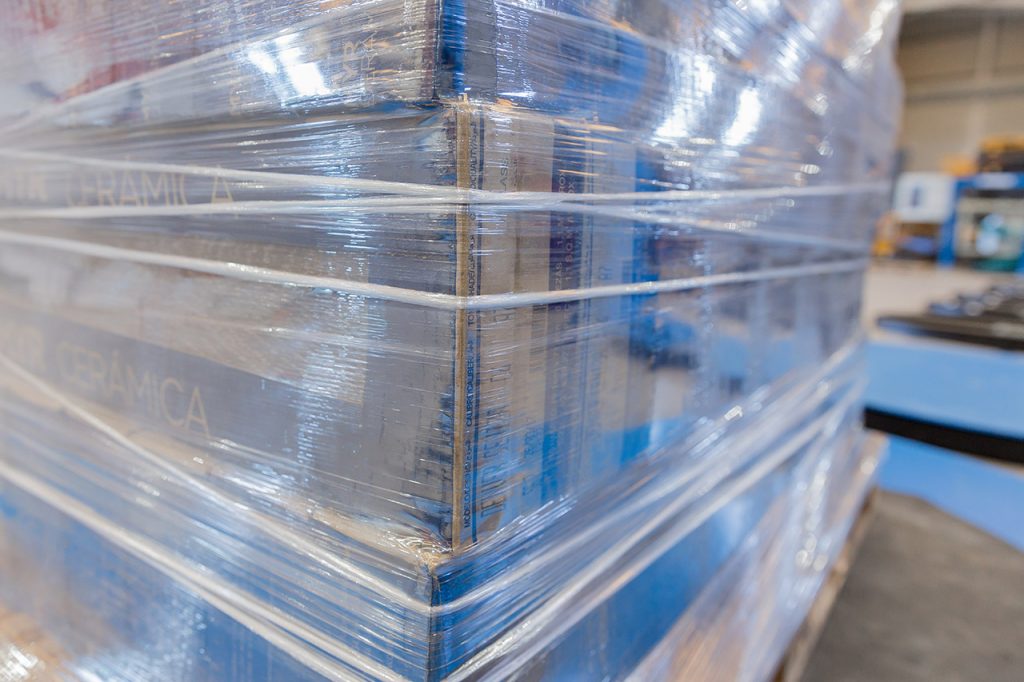
5. Optimization of the logistic process
Last but not least, another important point is the role of the stretch wrapper at the end of the line and in the company’s own logistics process. With automated packaging solutions, errors due to human intervention are solved, and better packaged and safer loads are achieved for transport. This contributes to logistics without losses due to poor packaging or unstable pallets, which also translates into savings. At the end of the day, the goal of every company is not to incur damage and loss of material in transport, so the packaging system, such as a stretch wrapper, has a lot to contribute in terms of protection and securing of the load.
In summary, as we have seen there are several factors to save on packaging and specifically in consumables such as stretch film. At Innova Group, as manufacturers of packaging systems, we offer consulting and studies of consumables and savings to determine which stretch wrapper and film type are best suited to your load. Our technical team can define what type of wrapping your product needs to improve the hold and protection, even using a smaller amount of film. Do not hesitate to contact us for detailed technical advice on your packaging project.
